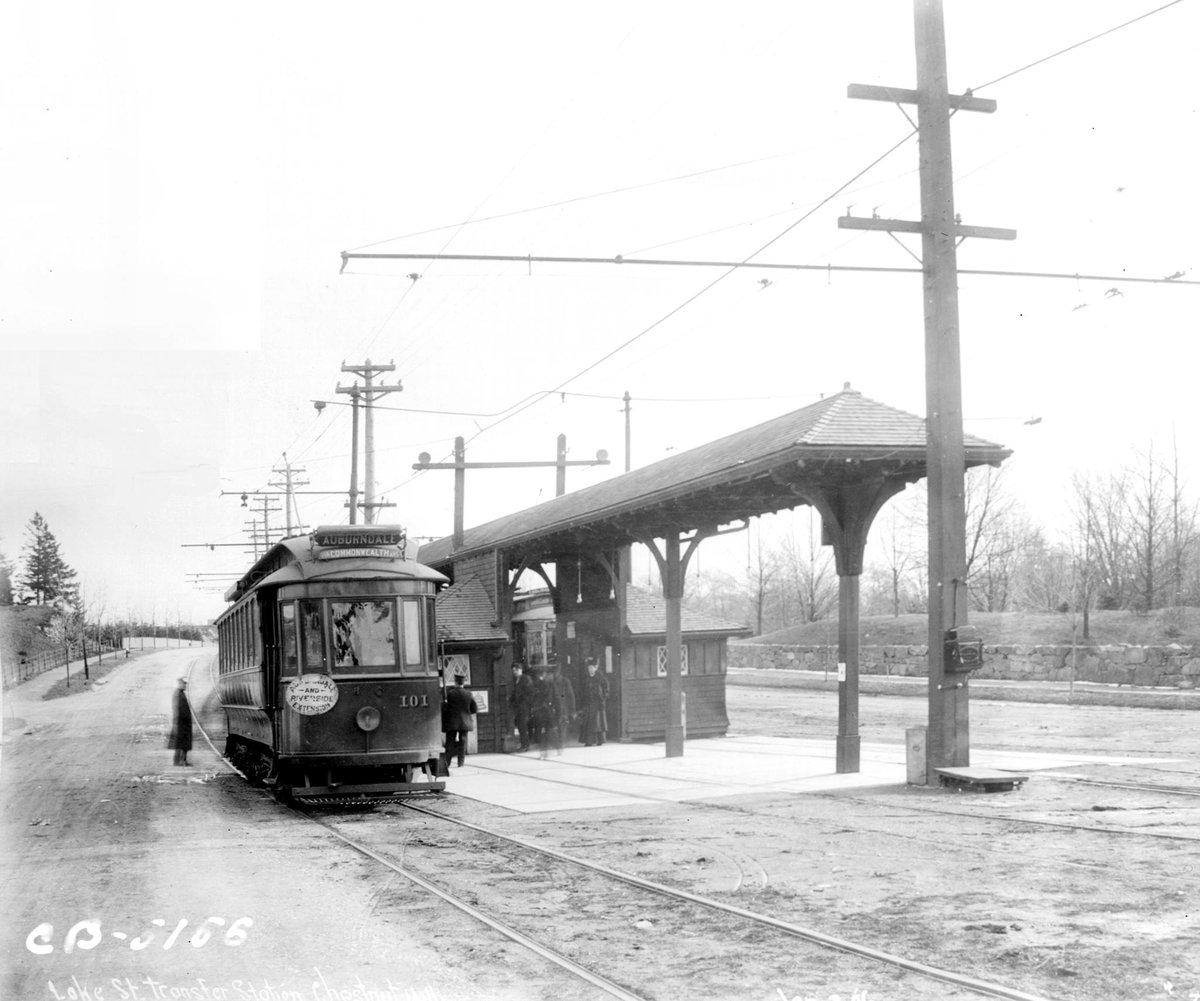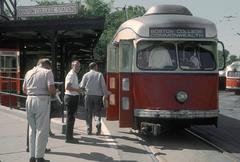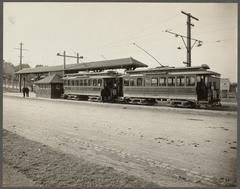
Boston College Station Visiting Hours, Tickets, and Nearby Attractions Guide
Date: 15/06/2025
Introduction
Boston College Station, the western terminus of the MBTA Green Line B branch, is a vital transit hub seamlessly connecting Boston’s vibrant urban core with the historical and academic environment of Boston College’s Chestnut Hill campus. Established in 1896, the station sits at the intersection of Commonwealth Avenue and Lake Street in Brighton, bordering Newton, and has evolved in tandem with Boston’s growth. Today, it continues to serve thousands of daily commuters, local residents, and visitors, offering efficient transit access, partial ADA accessibility, and proximity to a wealth of cultural, historical, and recreational attractions.
This guide provides a comprehensive overview of Boston College Station’s history, layout, visitor information, accessibility features, ticketing options, and nearby points of interest. Whether you’re a commuter, prospective student, or tourist exploring Boston’s rich heritage, this article will help you plan your visit and navigate the station with confidence.
For the latest schedules, ticketing details, and accessibility updates, refer to official resources such as the MBTA website and Wikipedia.
Table of Contents
- Historical Overview
- Visiting Information
- Nearby Attractions
- Frequently Asked Questions (FAQ)
- Conclusion
- References
Historical Overview
Early Origins and Establishment
Boston College Station’s history is intertwined with Boston’s late 19th-century streetcar expansion. Opened in 1896 as part of the Commonwealth Avenue line, the original station served as a crucial link between Boston’s bustling center and its emerging suburbs (Wikipedia). The station was constructed in the median of Commonwealth Avenue, reflecting the era’s preference for street-running light rail, and was initially operated by the Boston Elevated Railway (BERy).
This transit expansion coincided with the rapid growth of Boston’s educational institutions. Boston College, founded in 1863 and relocated to Chestnut Hill in 1909, benefited greatly from the improved connectivity (BC.edu).
Development as a Transit Terminus
By 1900, Boston College Station was established as the terminus of the Commonwealth Avenue line, which later became the Green Line B branch (Wikipedia). Its proximity to the college campus made it a primary access point for students, faculty, and residents. The station also facilitated the westward expansion of Boston’s population, supporting the growth of Brighton and Newton.
The station’s role evolved in tandem with campus development, with Boston College expanding its Chestnut Hill presence and increasing demand for reliable transit connections (BC.edu).
Transformations and Modernization
Throughout the 20th century, Boston College Station underwent several significant changes. In 1930, streetcar service west of the station was replaced by bus service, and the station was relocated to a new yard with a waiting room (Wikipedia). The station was officially renamed “Boston College” in 1947 to reflect the university’s growing influence.
With the end of direct MBTA bus connections in 1976, Boston College introduced private shuttle buses for campus transport (Wikipedia). The station remains a key terminus for the Green Line B branch, and the lower campus of Boston College now borders the station (MetroEasy).
Looking forward, the MBTA has planned a $29.3 million reconstruction of the Lake Street Yard to accommodate new Type 10 light rail vehicles, including the relocation of the station to a more accessible median platform. The project’s design-build contract is expected to be advertised in mid-2025, with construction from fall 2025 to mid-2027 (Wikipedia).
Visiting Information
Service Hours
Boston College Station operates in alignment with MBTA Green Line B branch service hours:
- First Train: Approximately 4:30–5:00 AM
- Last Train: Around 12:30–1:00 AM
Service frequency is every 7–10 minutes during peak hours and 10–15 minutes off-peak. For real-time updates and service changes, refer to MBTA Schedules and MBTA Service Alerts.
Tickets and Fare Payment
- Fare Payment: Passengers pay fares onboard Green Line trains at Boston College Station, as there are no ticket vending machines or staffed offices at the station.
- Accepted Payment Methods: CharlieCard (discounted fares), CharlieTicket, and contactless payments (credit/debit cards, mobile wallets).
- One-way fare: $2.40 with CharlieCard, $2.90 with CharlieTicket or cash.
- Passes: 1-Day LinkPass ($12.75) and 7-Day LinkPass ($22.50) are available for unlimited subway and bus rides (MBTA Fares).
- Purchase Locations: Reload or purchase fare cards at major MBTA stations or online prior to arrival.
Accessibility
Boston College Station is partially accessible:
- Features: Ramps, tactile paving, and audible announcements. Level boarding is available on low-floor Green Line vehicles.
- Limitations: Not all train cars are fully accessible; some older vehicles may require assistance.
- Improvements: Planned reconstruction will further enhance ADA compliance, adding elevators and a fully accessible median platform by mid-2027 (MBTA Capital Investment Plan).
- For Assistance: Check MBTA Accessibility for updates and contact MBTA customer service if needed.
Travel Tips
- Peak Hours: Weekday mornings (7:00–9:00 AM) and evenings (4:00–6:30 PM) are busiest.
- Event Days: Extra crowds during Boston College games and commencements; arrive early.
- Weather: Station is outdoors; dress appropriately and check for weather-related service updates.
- Luggage: Limited space on trains; travel light and avoid peak times if possible.
- Safety: The area is generally safe with MBTA Transit Police presence and emergency call boxes.
Nearby Attractions
Boston College Station is a gateway to several attractions and neighborhoods:
- Boston College Campus: Steps from the station, the campus features stunning Collegiate Gothic architecture, green spaces, Gasson Hall, Alumni Stadium, and Conte Forum (Boston College Tours).
- Chestnut Hill Reservoir: Scenic walking and jogging area adjacent to the station.
- Brighton and Allston: Neighboring communities with diverse dining, coffee shops, and local stores.
- Downtown Boston: Via Green Line, access Kenmore Square, Fenway, the Boston Common, Freedom Trail, and Museum of Fine Arts (Meet Boston).
- Dining: Commonwealth Avenue offers cafes and restaurants; additional options are available on campus and in nearby neighborhoods.
Frequently Asked Questions (FAQ)
Q: What are Boston College Station’s operating hours?
A: The station operates from approximately 5:00 AM to 12:30 AM daily. Trains run every 7–10 minutes during peak hours.
Q: How do I buy tickets at Boston College Station?
A: Fares are paid onboard using CharlieCards, CharlieTickets, or contactless payment. There are no vending machines at the station; purchase or reload fare cards in advance.
Q: Is the station accessible for people with disabilities?
A: The station is partially accessible with ramps and tactile paving; more comprehensive upgrades are planned for completion by mid-2027.
Q: Are there restrooms at the station?
A: No public restrooms are available at Boston College Station. Facilities can be found nearby on campus or along Commonwealth Avenue.
Q: What are popular attractions near Boston College Station?
A: The Boston College campus, Chestnut Hill Reservoir, and the vibrant neighborhoods of Brighton and Allston are all within easy reach.
Q: What should I do in an emergency?
A: Use the emergency call boxes on the platform or dial 911. MBTA Transit Police are available at 617-222-1212.
Conclusion
Boston College Station stands at the crossroads of Boston’s academic, historical, and urban life. Its rich legacy as part of Boston’s pioneering streetcar network, ongoing modernization, and proximity to cultural and recreational destinations make it an essential stop for students, commuters, and visitors alike.
Plan your visit by checking MBTA schedules, preparing your fare cards in advance, and exploring the wealth of attractions nearby. For enhanced travel planning, consider downloading the Audiala app for real-time transit updates and visitor tips. Boston College Station is more than a transit point—it’s a window into Boston’s dynamic past and promising future.
References
- Wikipedia: Boston College Station
- Boston College Mission and History
- MBTA Official Site
- MetroEasy Boston MBTA Subway Guide
- Boston Tourism Made Easy
- Boston College Transportation & Parking
- MBTA Capital Investment Plan
- MBTA Fares
- Meet Boston
- Boston College Accessibility


































































































































